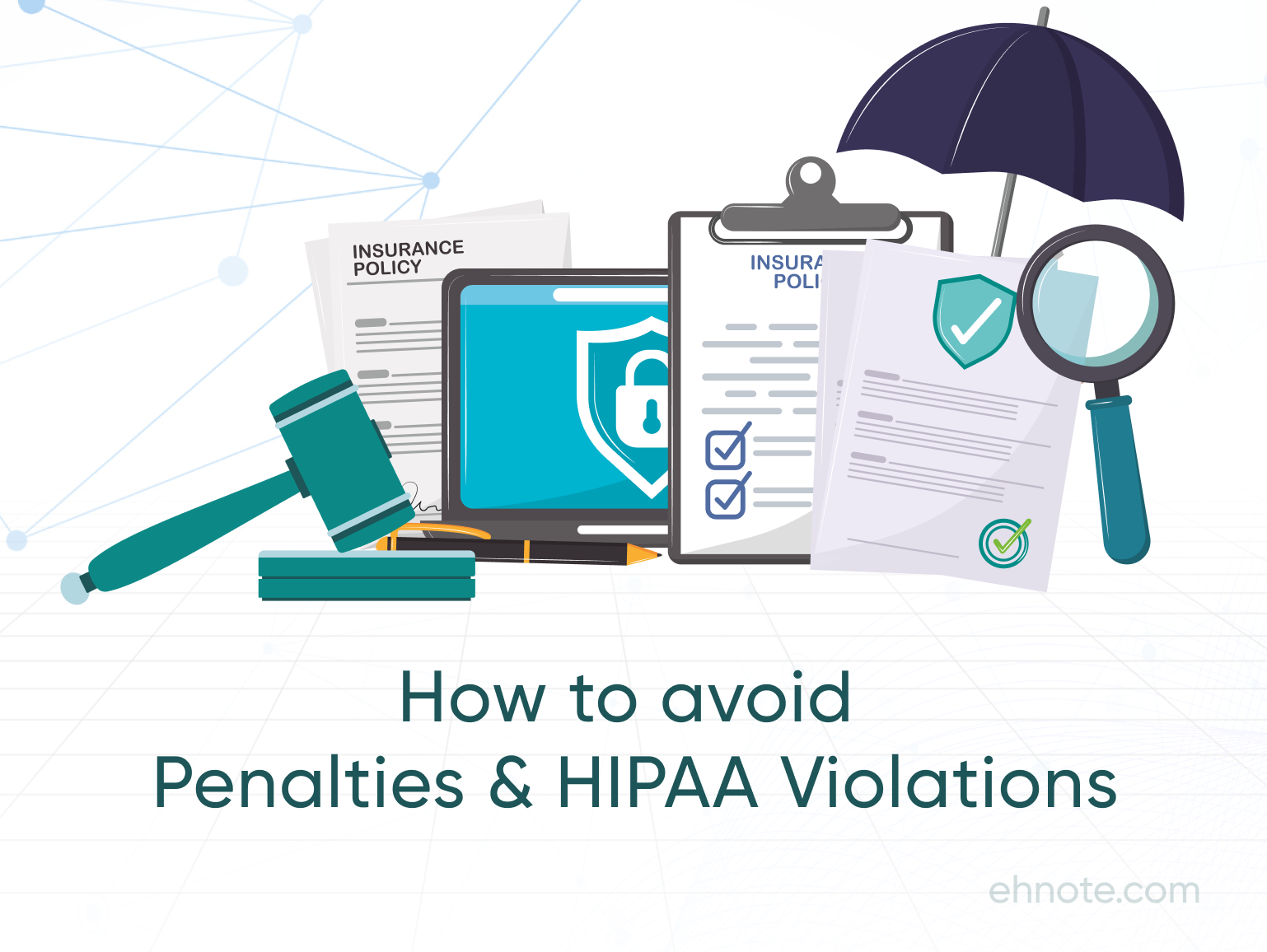HIPAA Compliance Guide for Ophthalmologists: Avoid Penalties in 2025

Introduction to HIPAA Compliance for Eye Care Practices
For Ophthalmologists, Practice Managers, and Eye Practice Owners, ensuring HIPAA compliance is not just a legal obligation but a cornerstone of patient trust and operational efficiency.
The Health Insurance Portability and Accountability Act (HIPAA) of 1996 sets strict standards for protecting patient health information (PHI), and violations can lead to severe financial and legal consequences. As of 2025, the stakes are higher than ever, with updated penalties reflecting inflation adjustments.
This article provides actionable insights into HIPAA compliance for ophthalmologists, focusing on avoiding penalties, understanding risks specific to eye care, and implementing best practices to safeguard your practice.
Understanding HIPAA Penalties in Eye Care: What’s at Stake?
HIPAA violations carry significant penalties, adjusted annually for inflation. As of 2025, civil monetary penalties range from $141 to $2,134,831 per violation, depending on the level of culpability. These penalties are categorized into four tiers:
- Unknowing Violation: $141–$56,826 per violation (e.g., an employee accidentally discloses PHI without malicious intent).
- Reasonable Cause: $1,418–$56,826 per violation (e.g., failing to conduct a security risk assessment).
- Willful Neglect (Corrected): $14,181–$56,826 per violation (e.g., neglecting safeguards but addressing the issue within 30 days).
- Willful Neglect (Uncorrected): $56,826–$2,134,831 per violation (e.g., ignoring a known breach without corrective action).
Criminal penalties can also apply for intentional violations, with fines up to $250,000 and imprisonment for up to 10 years if PHI is misused for commercial gain or malicious harm.
For eye care practices, the financial impact of these penalties can be devastating, especially for smaller clinics. Beyond fines, practices may face corrective action plans, reputational damage, and loss of patient trust, which can directly affect revenue in a competitive field like ophthalmology.
Why Ophthalmologists Are at Risk: Unique Challenges in Eye Care
Ophthalmology practices face unique HIPAA compliance challenges due to the nature of their work. Here are key risk areas:
- Handling Diagnostic Images: Ophthalmologists often use diagnostic images like OCT scans or fundus photos, which are considered PHI. If these images are stored or transmitted insecurely (e.g., on unencrypted devices), it’s a HIPAA violation.
- Complex Workflows: Eye care involves multidisciplinary coordination, such as sharing patient data with optometrists or endocrinologists for conditions like diabetic retinopathy. Without proper Business Associate Agreements (BAAs), these disclosures can violate HIPAA.
- Outdated EHR Systems: Many practices still use legacy Electronic Health Record (EHR) systems that lack modern security features or interoperability, increasing the risk of breaches.
- Staff Training Gaps: Employees, from front-desk staff to technicians, may not be adequately trained on HIPAA protocols, leading to accidental disclosures (e.g., discussing PHI in public areas).
These challenges make it critical for ophthalmologists to prioritize HIPAA compliance to avoid costly penalties and ensure seamless patient care.
Common HIPAA Violations in Ophthalmology Practices
Understanding common violations can help eye care professionals take preventive measures. Here are some frequent issues:
- Failure to Conduct a Security Risk Assessment (SRA): HIPAA mandates annual SRAs to identify vulnerabilities in your practice’s security measures. Many ophthalmology practices overlook this, leading to fines for non-compliance.
- Improper Access to PHI: An office manager accessing a patient’s chart beyond what’s necessary for billing or scheduling violates the HIPAA Minimum Necessary Standard.
- Unsecured Devices: Leaving laptops or tablets containing ePHI (electronic PHI) unencrypted or unattended poses a significant risk, especially if stolen.
- Breach Notification Delays: If a data breach occurs (e.g., a cyberattack exposing patient records), failing to notify affected patients, the Office for Civil Rights (OCR), and, in some cases, local media within the required timeframe can exacerbate penalties.
Steps to Ensure HIPAA Compliance in Your Eye Practice
To protect your practice from HIPAA penalties, implement these actionable steps:
1.Conduct an Annual Security Risk Assessment (SRA)
An SRA is a cornerstone of HIPAA compliance. Assess risks to ePHI by evaluating your practice’s administrative, technical, and physical safeguards. Document findings and implement remediation plans to address vulnerabilities, such as outdated software or weak passwords.
2.Train Staff Regularly on HIPAA Protocols
Ongoing training is essential for all employees, including doctors, technicians, and administrative staff. Cover topics like the Minimum Necessary Standard, proper handling of diagnostic images, and avoiding PHI discussions in public spaces. Document training sessions to demonstrate compliance during audits.
3.Secure Diagnostic Images and ePHI
Ensure all devices storing PHI, including imaging equipment, are encrypted and password protected. Use secure cloud-based EHR systems designed for ophthalmology to store and transmit data, reducing the risk of breaches.
4.Establish Business Associate Agreements (BAAs)
Before sharing PHI with vendors (e.g., EHR providers, IT consultants), sign BAAs to ensure they comply with HIPAA. This is particularly important for ophthalmology practices that rely on third-party diagnostic tools or billing services.
5.Implement Access Controls
Limit PHI access based on job roles. For example, an ophthalmologist may need full access to a patient’s chart, but a receptionist should only access scheduling and billing information. Use role-based access controls in your EHR system to enforce this.
6.Prepare for Breach Notification
Develop a breach response plan to notify affected patients, the OCR, and local media (if required) within 60 days of discovering a breach. Prompt action can mitigate penalties and demonstrate good faith.
Simplify Compliance with an Ophthalmology-Specific EHR: Why EHNOTE Stands Out
One of the most effective ways to ensure HIPAA compliance without the stress is to adopt an ophthalmology-specific EHR platform like EHNOTE. Designed with the unique needs of eye care practices in mind, EHNOTE offers built-in compliance management and tracking across all aspects of your practice—from clinical documentation and imaging to ASC operations and ePHI management.
With EHNOTE, you don’t have to worry about meeting regulatory requirements because the software is continuously updated to align with the latest HIPAA standards. This ensures your practice is always audit-ready, reducing the risk of penalties and reputational damage.
Unlike generic EHR systems, EHNOTE’s workflows are tailored for ophthalmology and integrate compliance seamlessly. This means your team doesn’t need extensive training on HIPAA procedures—the software handles compliance automatically, allowing your staff to focus on delivering exceptional patient care.
Whether it’s securing diagnostic images, enforcing access controls, or ensuring proper handling of ePHI, EHNOTE takes care of the complexities, so you can prioritize what matters most: your patients. By choosing EHNOTE, you’re not just adopting an EHR—you’re investing in peace of mind and a future-proof solution for HIPAA compliance in 2025 and beyond.
Benefits of HIPAA Compliance for Eye Care Practices
Beyond avoiding penalties, HIPAA compliance offers tangible benefits for ophthalmology practices:
- Enhanced Patient Trust: Patients are more likely to choose a practice that prioritizes their privacy, especially in a field where sensitive data like vision health is involved.
- Improved Efficiency: Modern, HIPAA-compliant EHR systems streamline workflows, such as integrating diagnostic data directly into patient records, saving time for busy ophthalmologists.
- Regulatory Incentives: Compliance with HIPAA aligns with programs like the Centers for Medicare & Medicaid Services (CMS) requirements, potentially qualifying your practice for incentives.
Protect Your Ophthalmology Practice in 2025
HIPAA compliance is non-negotiable for Ophthalmologists. With penalties reaching up to $2,134,831 per violation in 2025, the cost of non-compliance is too high to ignore. By implementing best practices and leveraging tools like EHNOTE, your practice can avoid violations while enhancing patient trust and operational efficiency. Stay proactive—invest in HIPAA compliance today to safeguard your practice’s future in the ever-evolving landscape of eye care.
